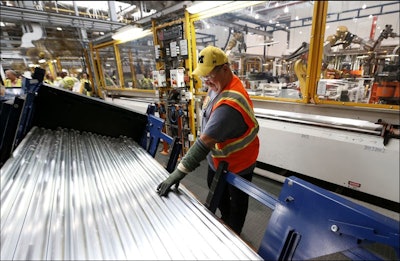
At the International Plastics Showcase (NPE) in Orlando, FL, the usual excitement surrounded 3D printing. What may have been more impressive was the amount of companies that were actively looking to reshore, and the reports of those working to keep their facilities and workforce in the U.S.
Describing this as an “encouraging sign,” Scott Paul, the Alliance for American Manufacturing (AAM) president, recently shared his thoughts when I spoke with him about the current state of manufacturing.
“Strength of the dollar is a concern for any company with international exposure,” says Paul, adding that the growing concern with the strength of the U.S. dollar has increased as American exports could become less competitive.
Evidence validating these concerns has emerged recently as the March trade figures were released by U.S. Census Bureau and the U.S. Bureau of Economic
Analysis, through the Department of Commerce. The numbers “showed an explosion in our trade deficit,” adds Paul. The goods and services deficit was $51.4 billion in March, up $15.5 billion from $35.9 billion in February. According to AAM, this is the largest monthly expansion in the trade deficient since December 1996.
Other data is indicating that manufacturing job growth may be in a slowdown period, and while Paul explains it is not a recession, it is “obviously a concern.” Ultimately, compared to last year’s manufacturing growth, 2015 is not off to an encouraging start – not yet.
“There are still a number of companies that are looking seriously at bringing work back to the U.S.” A recent poll by Ipsos reported that eight in 10 Americans would prefer to protect jobs when asked to choose between access to goods and American manufacturing jobs.
Paul was encouraged to see this for himself at NPE, as many attendees visited the AAM booth explaining their decision to manufacture in the U.S. Yet this wouldn’t have been the case seven or eight years ago, he says. “It would have been the opposite point of view with companies looking to close down production in American.”
The factors encouraging this shift towards “Made in America” include, the ability to control inventory, quality, and shipping costs, in addition to mitigating political risks.
Other factors encouraging a shift toward American manufacturing is the ongoing wage pressure in lower-cost areas in Asia. Paul explains that as wages rise, cost calculations are different, adding that energy costs are becoming relatively low for U.S. manufacturers as well.
Paul’s last observation pertains more specifically to commodity manufacturing, as he explains, “There seems to be some global overcapacity that’s driven by over production in China as the economy is slowing there.” This creates some challenge for U.S. manufacturers.
In the face of these challenges, many are still moving work overseas; however Paul still remains optimistic, as fewer companies are making this decision, and more are beginning to realize the benefits of “Made in America.”



















